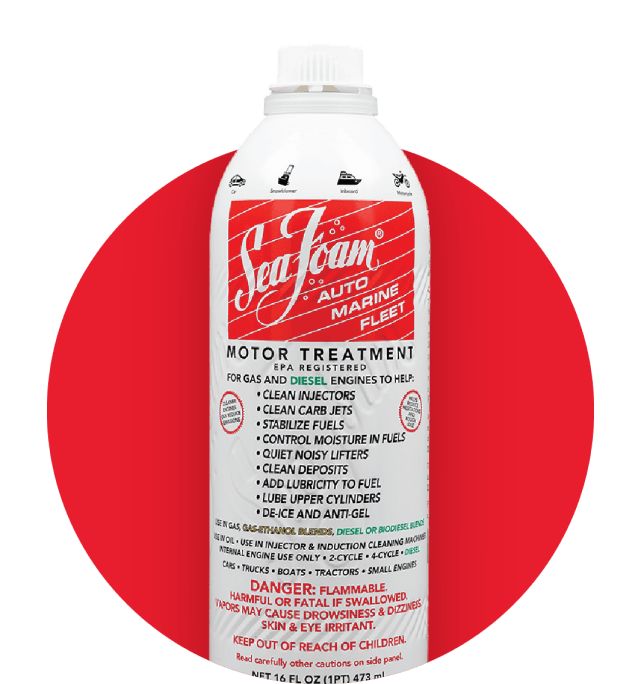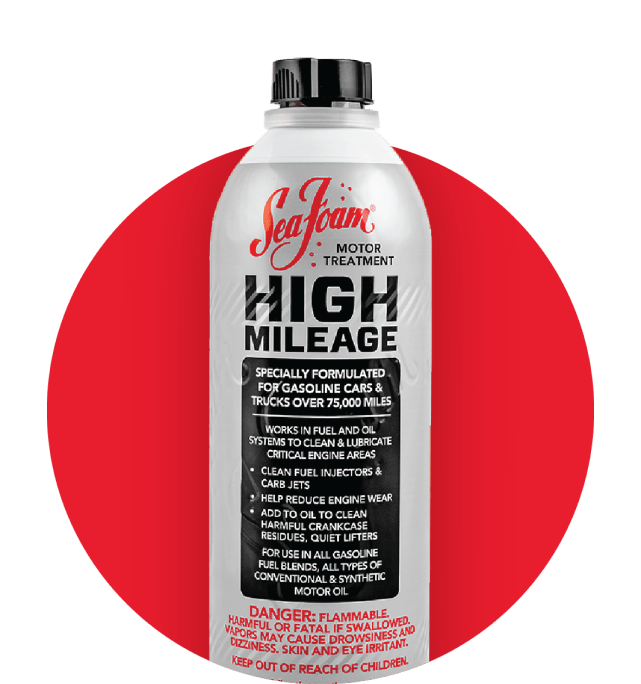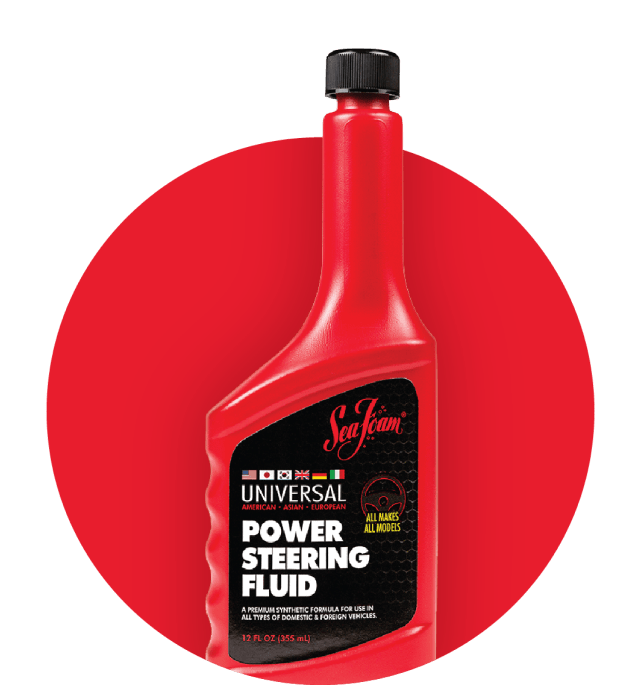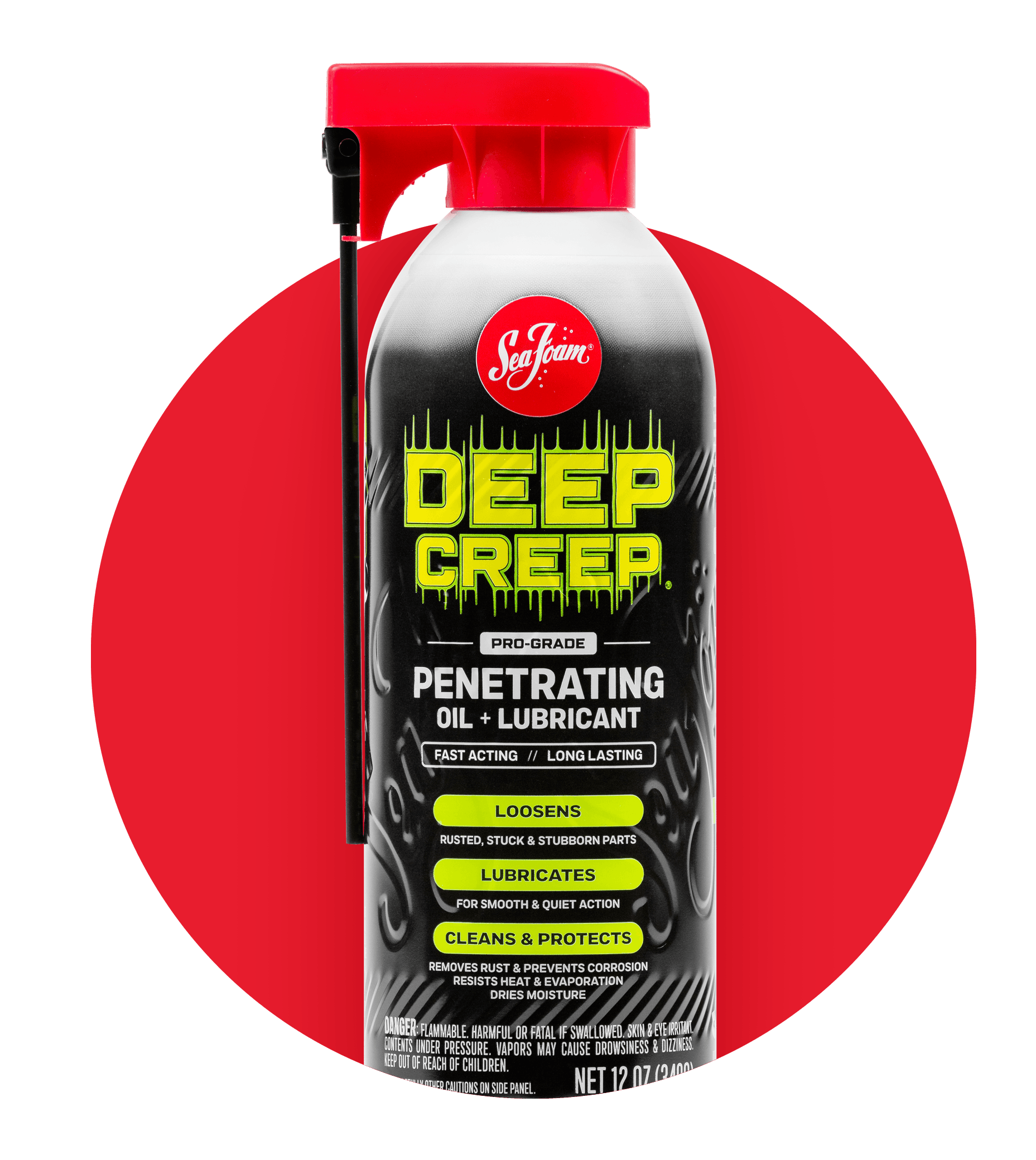HOW TO STORE A VEHICLE
Each vehicle may have varying needs when you put them away, but storage strategies for the engine and fuel system will be the same.
- Fill the system with fresh fuel, as full as you can
- Stabilize the fuel
- Fog the cylinders (consult your owner’s manual if your vehicle has a catalytic converter)
- Change the oil
- Treat the oil
sea foam motor treatment
three easy steps
Next on the storage checklist is fogging to prevent cylinder rust. It generally involves removing the spark plugs, adding oil to the cylinders through the spark plug holes, and then cranking the engine over to distribute the oil before re-installing the plugs. Make sure to refer to the vehicle’s service information for any potential differences beforehand.
Deep Creep is easier to use than regular motor oil for fogging as it is applied in a spray instead of a small funnel or oil can. Pouring oil in usually leads to oil pooling on top of the piston instead of on the cylinder walls where it is needed. Also, it is typically recommended to fog the cylinders before changing the oil. If you cannot disable your fuel system, some raw fuel will end up in the crankcase, which can be drained when the oil is changed.
How sea foam motor treatment protects your engine during storage
Sea Foam Motor Treatment works to prevent the formation of harmful gum and varnish and adds protective lubricity to the entire fuel system during seasonal storage. Sea Foam also preserves ignition vapors and stabilizes fuel up to two years.
#seafoamworks
related
products
For motors of all shapes and sizes.




